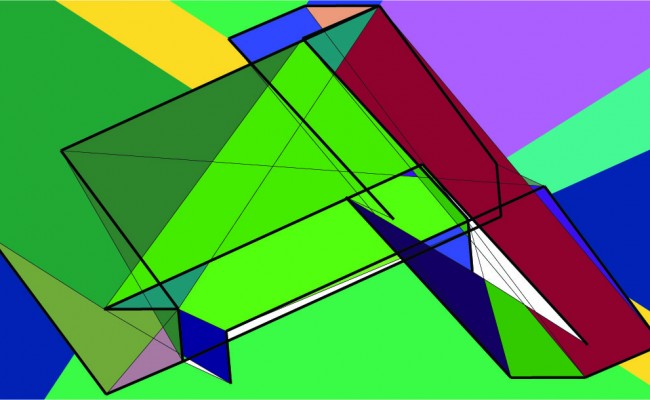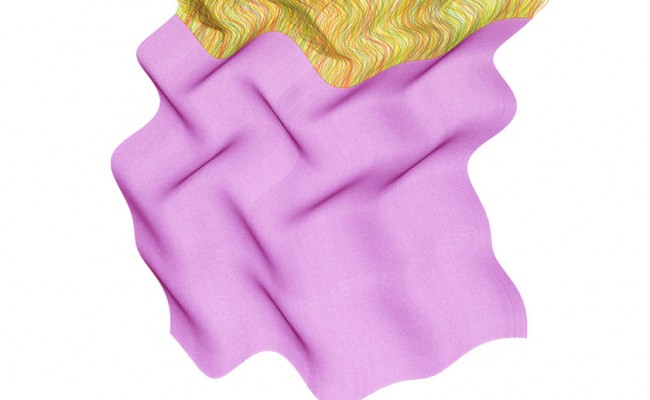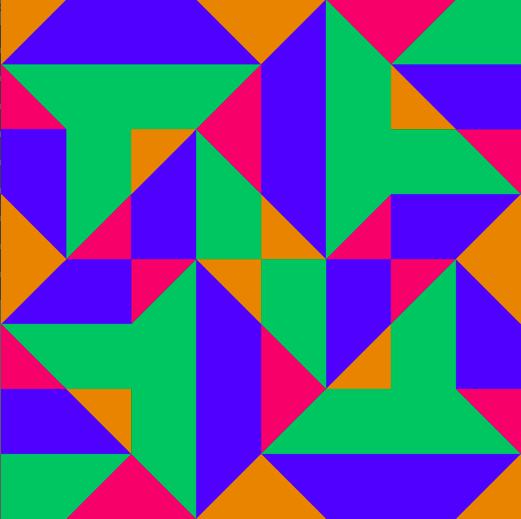ISEA2011 Istanbul and the Museum of Contemporary Art Zagreb are pleased to present GEOMETRIES OF THE SUBLIME.
This is an art program that focuses on world pioneers of contemporary geometric and digital arts. The program sees the participation of Charles Csuri, Roman Verostko, Paul Brown, Manfred Mohr and Vera Molnar.
Chuck Csuri - (Monday, 17 October to Sunday, 23 October)
Roman Verostko - (Monday, 24 October to Sunday, 30 October)
Paul Brown - (Monday, 31 October to Sunday, 6 November)
Manfred Mohr - (Monday, 7 October to Sunday, 13 November)
Vera Molnar - (Monday, 14 November to Sunday, 20 November)
These are experimental artists who have characterized the second half of the 20th Century and experimented with digital technology, art and science - searching through chaos for perfect forms and the sublime.
The program, realized by Senior Curators Lanfranco Aceti and Tihomir Milovac, is in collaboration with and supported by the Museum of Contemporary Art Zagreb and Kasa Gallery.
Geometries of the Sublime will present a series of geometric artworks that will light the New Media Façade of the Museum of Contemporary Art Zagreb and will celebrate the contribution of these pioneers to the world of contemporary digital art.
Geometries of the Sublime is part of the Official Parallel Program of the 12th Istanbul Biennial.
Bios of the Artists
Paul Brown
Paul Brown is an artist and writer who has specialised in art, science & technology since the late-1960s and in computational & generative art since the mid 1970s. His early work included creating large-scale lighting works for musicians and performance groups (Meredith Monk, Music Electronica Viva, Pink Floyd, etc…) and he has an international exhibition record that includes the creation of both permanent and temporary public artworks dating from the late 1960s. He has participated in shows at major venues like the TATE, Victoria & Albert and ICA in the UK; the Adelaide Festival; ARCO in Spain, the Substation in Singapore and the Venice Biennale. His work is represented in public, corporate and private collections in Australia, Asia, Europe, Russia and the USA. In 1996 he won the Fremantle Print Award.
He is co-editor, with Lanfranco Aceti of LEA, the e-journal of the International Society for the Arts, Sciences and Technology (MIT Press) and a member of the editorial board of Digital Creativity (Routledge). From 1992 to 1999 he edited fineArt forum, one of the Internet's longest established art 'zines and from 2008-10 was Chair of the Computer Arts Society (CAS) and is moderator of the DASH (Digital ArtS Histories) and CAS e-lists.
During 2000/2001 he was a New Media Arts Fellow of the Australia Council and he spent 2000 as artist-in-residence at the Centre for Computational Neuroscience and Robotics (CCNR) at the University of Sussex in Brighton, England. From 2002-05 he was a visiting fellow in the School of History of Art, Film and Visual Media at Birkbeck College, University of London, where he worked on the CACHe (Computer Arts, Contexts, Histories, etc...) project and from 2005 he has been honorary visiting professor and artist-in-residence at the CCNR, School of Informatics at the University of Sussex and from 2010 to 2012 is Synapse artist-in-residence at the Centre for Intelligent System Research, Deakin University, Geelong. Australia.
Charles Csuri
Charles Csuri is best known for pioneering the field of computer graphics, computer animation and digital fine art, creating the first computer art in 1964. Csuri has been recognized as the father of digital art and computer animation by the Smithsonian Magazine, and as a leading pioneer of computer animation by the Museum of Modern Art (MOMA) and The Association for Computing Machinery Special Interest Group Graphics (ACM-SIGGRAPH). Between 1971 and 1987, while a senior professor at the Ohio State University, Charles Csuri founded the Computer Graphics Research Group, the Ohio Super Computer Graphics Project, and the Advanced Computing Center for Art and Design, dedicated to the development of digital art and computer animation. Csuri was co-founder of Cranston/Csuri Productions (CCP), one of the worlds first computer animation production companies. In 2000 Charles Csuri received both the 2000 Governor's Award for the Arts for the best individual artist, and The Ohio State University Sullivant Award, that institution's highest honor, in acknowledgment of his lifetime achievements in the fields of digital art and computer animation.
Manfred Mohr
Manfred Mohr is considered a pioneer of digital art. After discovering Prof. Max Bense's information aesthetics in the early 1960's, Mohr's artistic thinking was radically changed. Within a few years, his art transformed from abstract expressionism to computer generated algorithmic geometry. Encouraged by the computer music composer Pierre Barbaud whom he met in 1967, Mohr programmed his first computer drawings in 1969.
Some of the collections in which he is represented: Centre Pompidou, Paris; Joseph Albers Museum, Bottrop; Mary and Leigh Block Museum of Art, Chicago; Victoria and Albert Museum, London; Ludwig Museum, Cologne; Wilhelm-Hack-Museum, Ludwigshafen; Kunstmuseum Stuttgart, Stuttgart; Stedelijk Museum, Amsterdam; Museum im Kulturspeicher, Würzburg; Kunsthalle Bremen, Bremen; Musée d'Art Moderne et Contemporain, Strasbourg; Daimler Contemporary, Berlin;Musée d'Art Contemporain, Montreal; McCrory Collection, New York; Esther Grether Collection, Basel.
Mohr has had many one-man shows / retrospectives in museums and galleries like: ARC - Musée d'Art Moderne de la ville de Paris, Paris 1972; Joseph Albers Museum, Bottrop 1998; Wilhelm-Hack Museum, Ludwigshafen 1987, 2002; Museum for Concrete Art, Ingolstadt 2001; Kunsthalle Bremen, Bremen 2007; Museum im Kulturspeicher, Würzburg 2005; Grazyna Kulczyk Foundation, Poznan 2007.
He took part in innumerable group shows for example at: MoMA - Museum of Modern Art, New York 1980; Centre Pompidou, Paris 1978, 1992; ZKM (Center for Art and Media), Karlsruhe 2005, 2008, 2010; Museum Ritter, Waldenbuch 2005, 2006, 2008;Museo Nacional Centro de Reina Sofia, Madrid 1989; MoCA, Los Angeles 1975; National Museum of Modern Art, Tokyo 1984; Museum of Modern Art, San Francisco 1973, 1977, 1980; MoMA-PS1, New York 2008; Leo Castelli Gallery, New York 1978; Galerie Paul Facchetti, Paris 1965 und Zürich 1970. Among the awards he received are: Golden Nica from Ars Electronica, Linz 1990; Camille Graesser-Preis, Zürich 1990; [ddaa] d.velop Digital Art Award, Berlin 2006; Artist Fellowship, New York Foundation of the Arts 1997.
Vera Molnar
Vera Molnar was born in Budapest but has lived and worked in Paris for many years. She tells us that she started painting at the age of twelve, her first subject matter, nymphs and trees, inspired by an uncle. She soon progressed to more geometrical themes, and in 1968 started working with computers. Her work during this period focused on the breakup of repeating units, often expressed as a series of increasingly fractured images.
Molnar essay Toward Aesthetic Guidelines for Painting with the Aid of a Computer
See also extensive essay by Frank Popper on Molnar's work.
(Text Courtesy of DAM)
Roman Verostko
Roman Verostko, born in 1929, maintains an experimental studio in Minneapolis where he has developed original algorithmic procedures for creating art. Active as an exhibiting artist since 1963, his earliest use of electronics consisted of synchronized audio-visual programs dating from 1967-68. Aware of the awesome power of algorithmic procedure he began experimenting with code and exhibited his first coded art programs in the early 1980's. In 1987 he modified his software with interactive routines to drive paint brushes mounted on a pen plotter’s drawing arm.
Recipient of SIGGRAPH's "Lifetime Achievement Award" in 2009 and the 1994 Golden Plotter First Prize (Germany) he was Director if ISEA 1993 and served on the Board during the early years of ISEA. His work has been included in the "The Algorithmic Revolution" (ZKM, 2005), the "Digital Pioneers" (V&A , London, 2009), “Code: the language of our time” (2003) and "Genetic Art- Artificial Life" (Ars Electronica, 1993) . Projects include an illustrated limited edition of George Boole's "Derivation of the Laws..." (1990); a series of illuminated Universal Turing Machines, a 40 foot mural for the new Science and Engineering Center at the University of St. Thomas in St. Paul, MN (1997); a 24 foot installation, The Flowers of Learning, at Spalding University's Academic Learning Center, Louisville, KY, (2006); and WIM: The Upsidedown Mural, spanning 2 storeys in the new Fred Rogers Center at St. Vincent College in Latrobe, PA, (2008).




